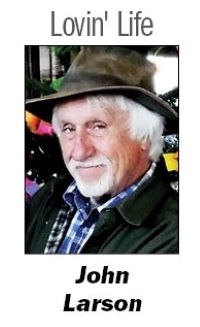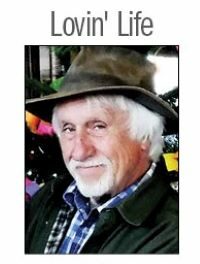
I mean, Eskimos may have 50 words for snow, but after the last few weeks, I’m guessing you could come up with 50 words for wind. You have your breeze, gust, squall, gale, dust devil and so on, but around here it’s dang-wind, dadgum-wind, geez-Louise-wind, downright-bleeping-wind and [expletive deleted] wind.
For better or worse, one thing you learn in the desert Southwest is, “Everyone knows it’s win-dee … “ as the old song goes.
That nugget popped into my noggin a few days ago when I re-watched the Gary Cooper movie High Noon; there was no wind. Thinking back to the hundreds of Westerns I’ve seen, that’s one thing that they were missing; it’s hardly ever windy.
I’ve gone off on this before; although most of my all-time favorite TV shows were the Westerns of the 50s and 60s, there were some details that those shows didn’t get quite right. Sure, the real old west was gritty and hard, with fast horses, long trail rides, stagecoach robberies, bank robberies and train robberies, but there were hardly ever any fast-draw shootouts in the street, and every single cowboy didn’t sport unbuttoned vests. Or wear the same style of hat. On TV, they all did. Except for Johnny Yuma.
On top of that, along with freed slaves, vaqueros, and general adventure-seeking eastern dudes, many real-life cowboys were Civil War veterans, among which were a good number suffering from what we now know as post-traumatic stress syndrome. I don’t know if the above-mentioned Johnny Yuma, “The Rebel,” had PTSD, but I doubt it, although he kept wearing his Confederate Army cap and always fought for the underdog. As a kid, I wanted to be him, fighting for the underdog sans his cool hogleg and scattergun.
Speaking of those days, I was looking at a couple of history books about Socorro and envisioning how things were, say, 150 or so years ago. One book, Be My Guest, was written by hotelier Conrad Hilton, who was born in San Antonio, went to New Mexico Tech, whose son married Elizabeth Taylor and whose great-granddaughter went on to achieve fleeting fame by embarrassing the family name.
Anyway, in the book, he writes, “In 1880, Socorro was a town to stir a man’s blood as well as his imagination… The town supported one bank, six saloons, a generous number of sporting houses, a storied Plaza and an opera house. The bank got 18 percent on the best securities, the bars never closed, and the opera house offered culture ‘with the original New York cast.’”
Conrad goes on to say that his father, Gus Hilton, a subcontractor to quarry rock for a smelter three miles west of Socorro, along with six other men, were attacked by a band of Apaches up in Blue Canyon. Five in his party were killed, so Gus decided not to go up Blue Canyon Road ever, ever again, and he eventually opened a business in San Antonio. Wise move.
But I digress.
When the wind blows, history starts showing up in the yard. It’s not exactly Dust Bowl level, but the wind does uncover long-lost curios from the ground. Those fragments from the past get uncovered on windy days; old bottles, glass insulators, broken doll heads, railroad spikes, rusty stuff, even a golf ball … you name it.
One time a rusty old hinge turned up in the yard. My wife at the time said, “That’s a treasure.” A little bit of history of that little bit of property. So I swished that rusty hinge around in a bucket of water and dutifully set it on the back porch railing, along with old screws and nails, a piece of rebar, a tiny bit of smithsonite, and a plethora of geodes and other weird-looking rocks.
I would keep hoping to look down and find a rare 1905 nickel that may have been dropped by a hard rock miner from Kelly.
One wonders what Socorroans of the future will glean from what the wind uncovers in their time. I can see it now, on this day 150 years from now, some guy is walking along and pulls an old cracked cell phone half buried in the dirt, can’t figure out what it is, takes it home, and his wife says, “that’s a treasure,” and puts it on the porch railing next to what archaeologists hypothesize was curiously known as a selfie stick.
You never know. That time may come when we’ll see the demise of social media.
Until that day, I predict everybody will get to be anonymous for 15 minutes.

















